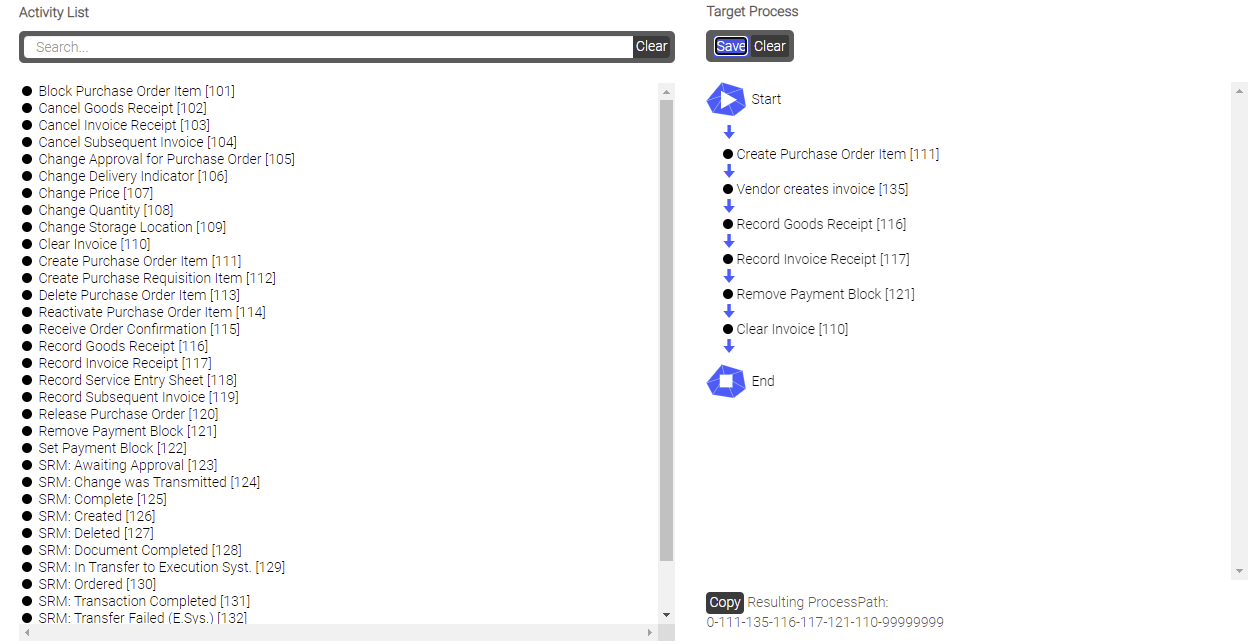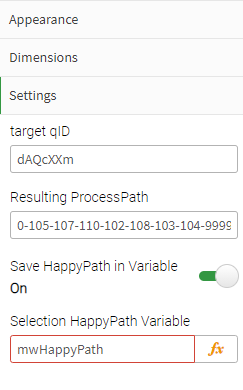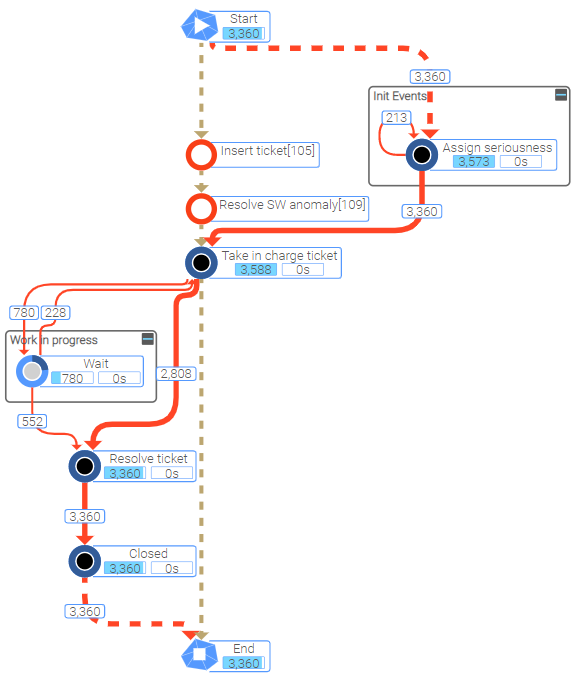|
ProcessModeler |
Scroll Previous Topic Top Next Topic More |
With the ProcessModeler, target processes can be defined so that deviations from them can be investigated with the help of the ProcessAnalyzer.

On the left side in the figure above ("Activity List") you see an extract of all possible activities that you can select to define a target process.
1.Drag and drop the desired activities to the right side ("Target Process") between the Start and End nodes and arrange them in the order you want. If you want to find an activity more quickly, there is also a search bar in which you can enter the name of the respective activity.
2.Click Save to save the target process and transfer it to the ProcessAnalyzer.
3.If you want to model a new process, click Clear to delete all activities in the "Target Process".
In order for the extension to run, the following dimensions and settings must be configured:
Dimensions |
|
•"ActivityType": The field that contains the descriptive name of the activity should be entered here. Default setting: ActivityType •"ActivityTypeID": The field that contains the ID of the activity should be entered here. Default setting: ActivityTypeID
|
 |
Settings |
|
•"target qID": The qID of the corresponding ProcessAnalyzer must be entered here so that a link can be established between the Modeler and Analyzer and the Modeler can transfer the target process to the ProcessAnalyzer. Only one ProcessModeler can be linked to one ProcessAnalyzer at a time. •"Resulting ProcessPath": The target process path of the ProcessModeler is entered here. The only purpose of this is that you can copy the path. •By setting "save HappyPath in variable" to "On" the resulting happy path is written to the variable chosen below. |
 |
How is it displayed in the ProcessAnalyzer?
The target process, which is also called happy path, is centered in the middle and its associated edges are highlighted in color. The deviations from this process are shown in red in this case. The colors can be adjusted in the settings of the ProcessAnalyzer.
The first activity differs from the other activities. This is because this activity does not appear in the current data selection, but it is part of the target process and was therefore inserted artificially.
